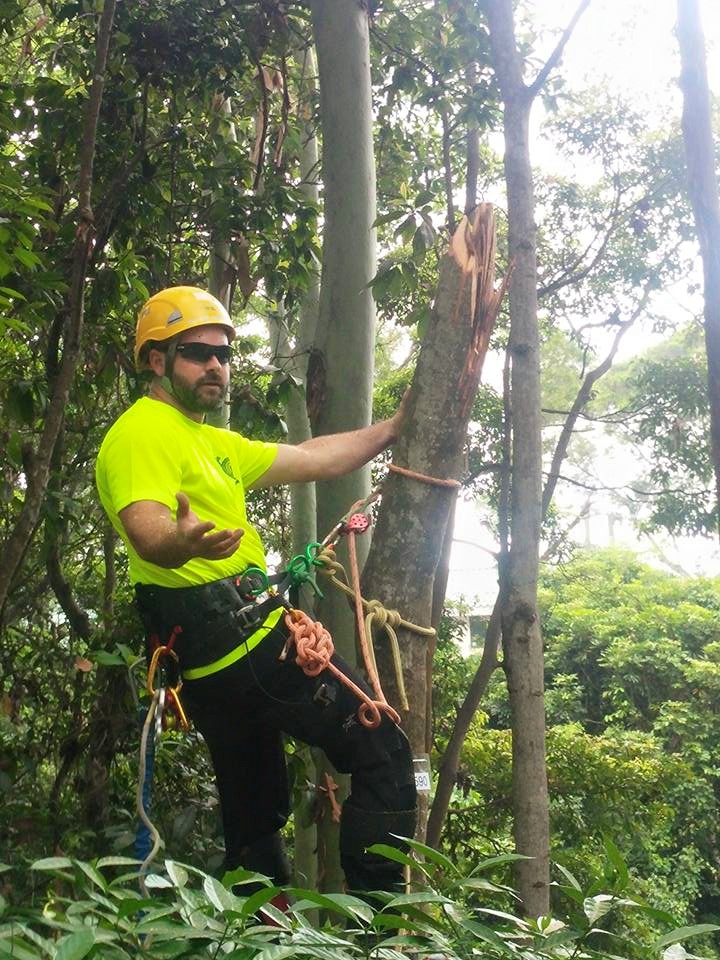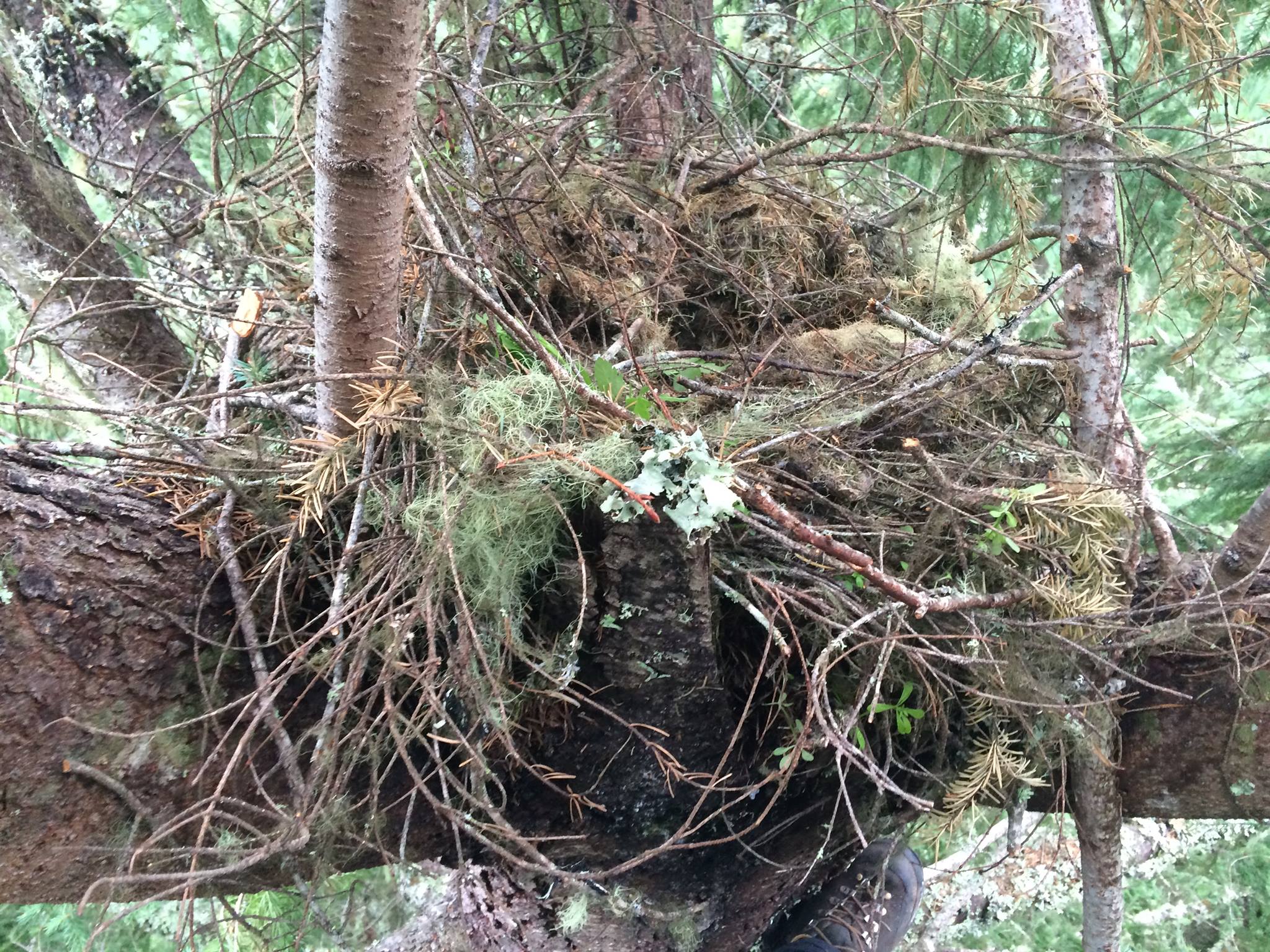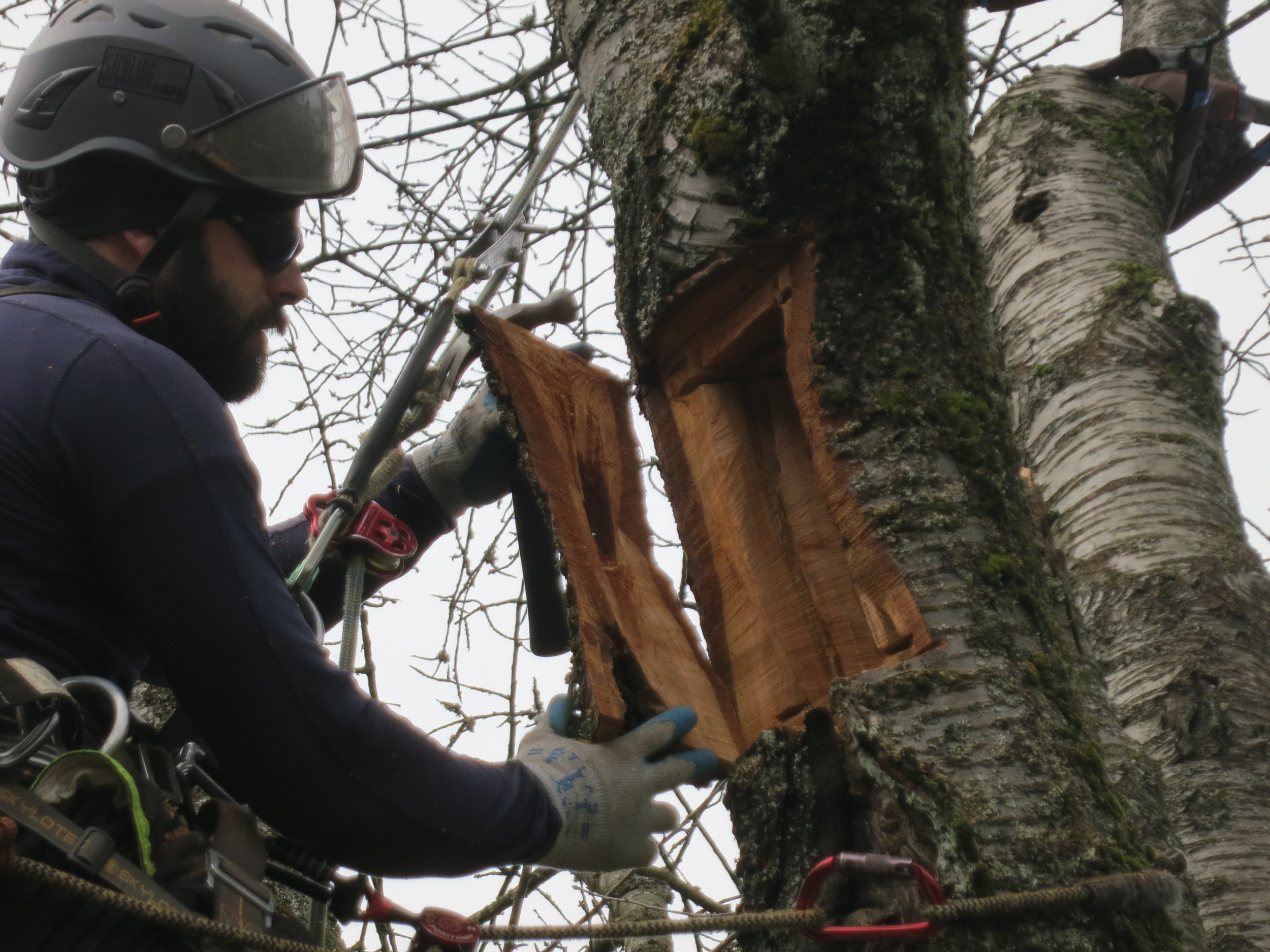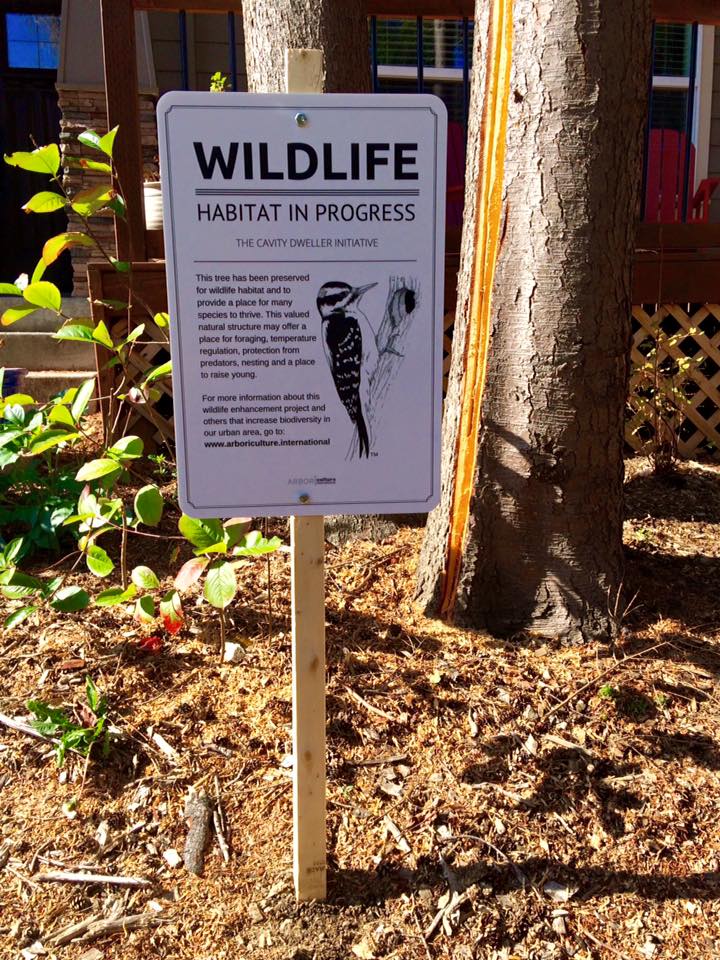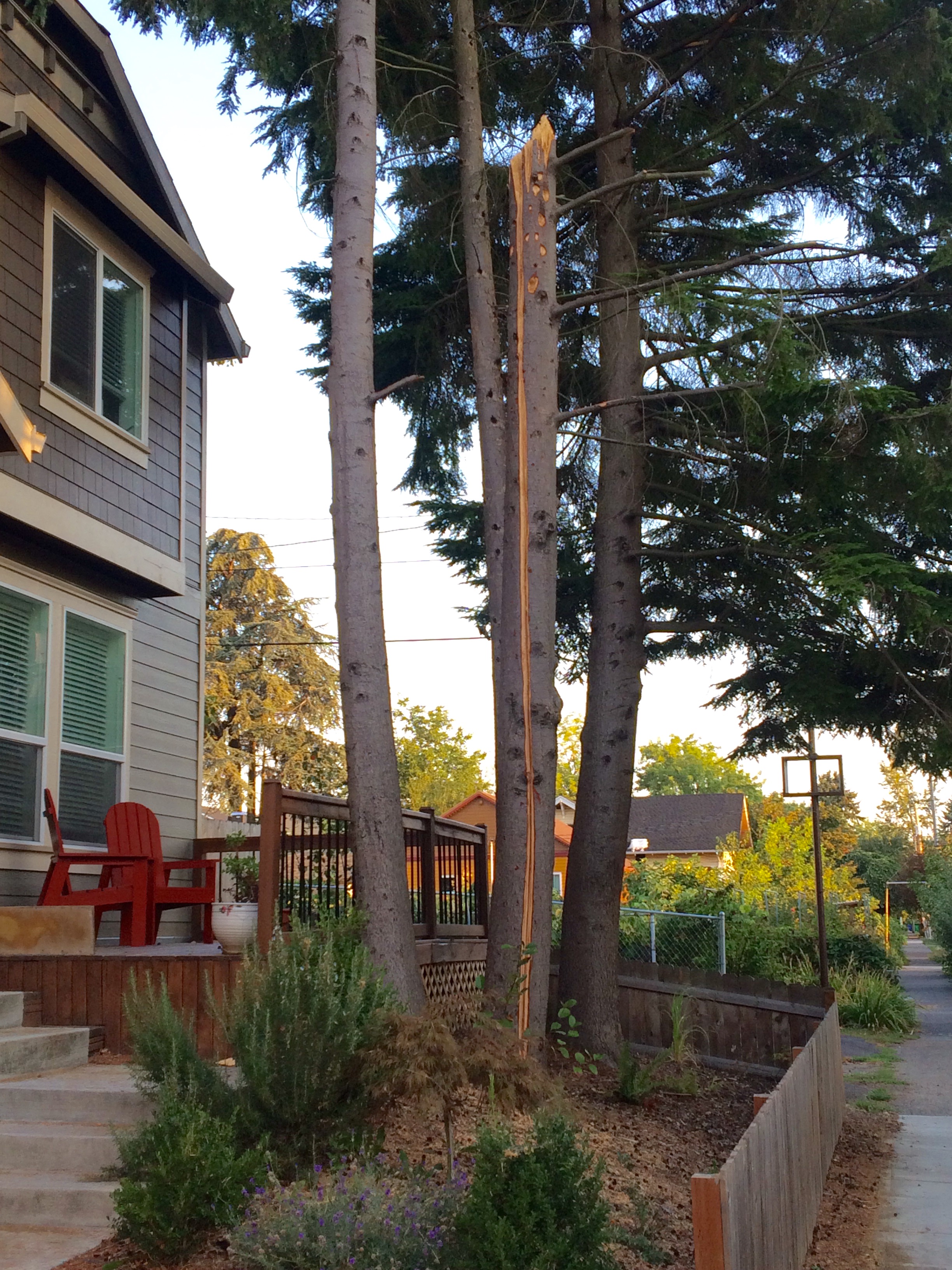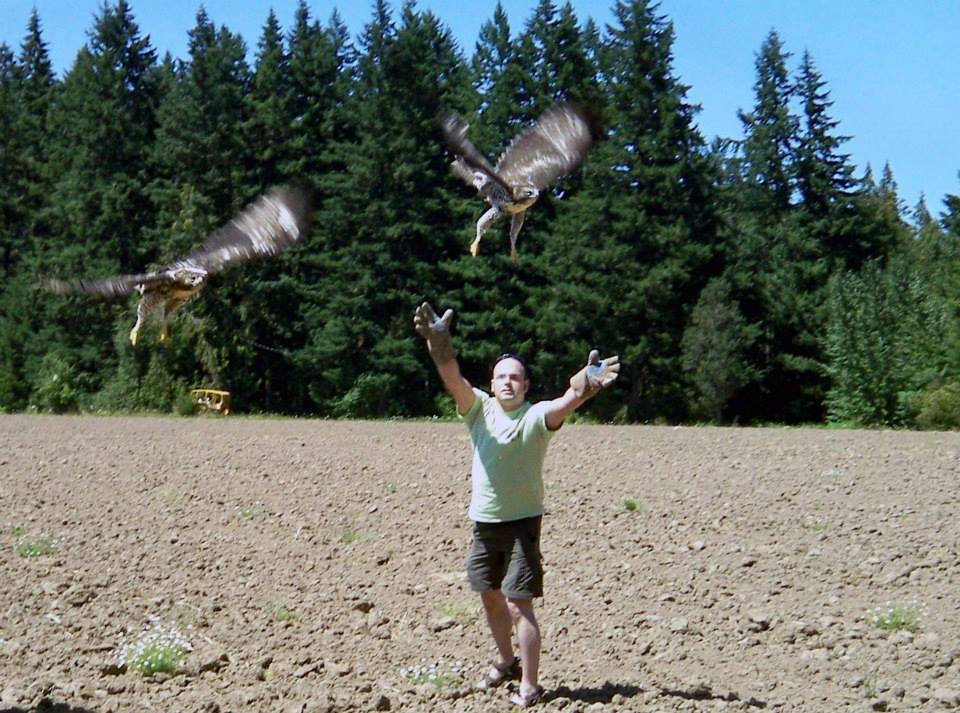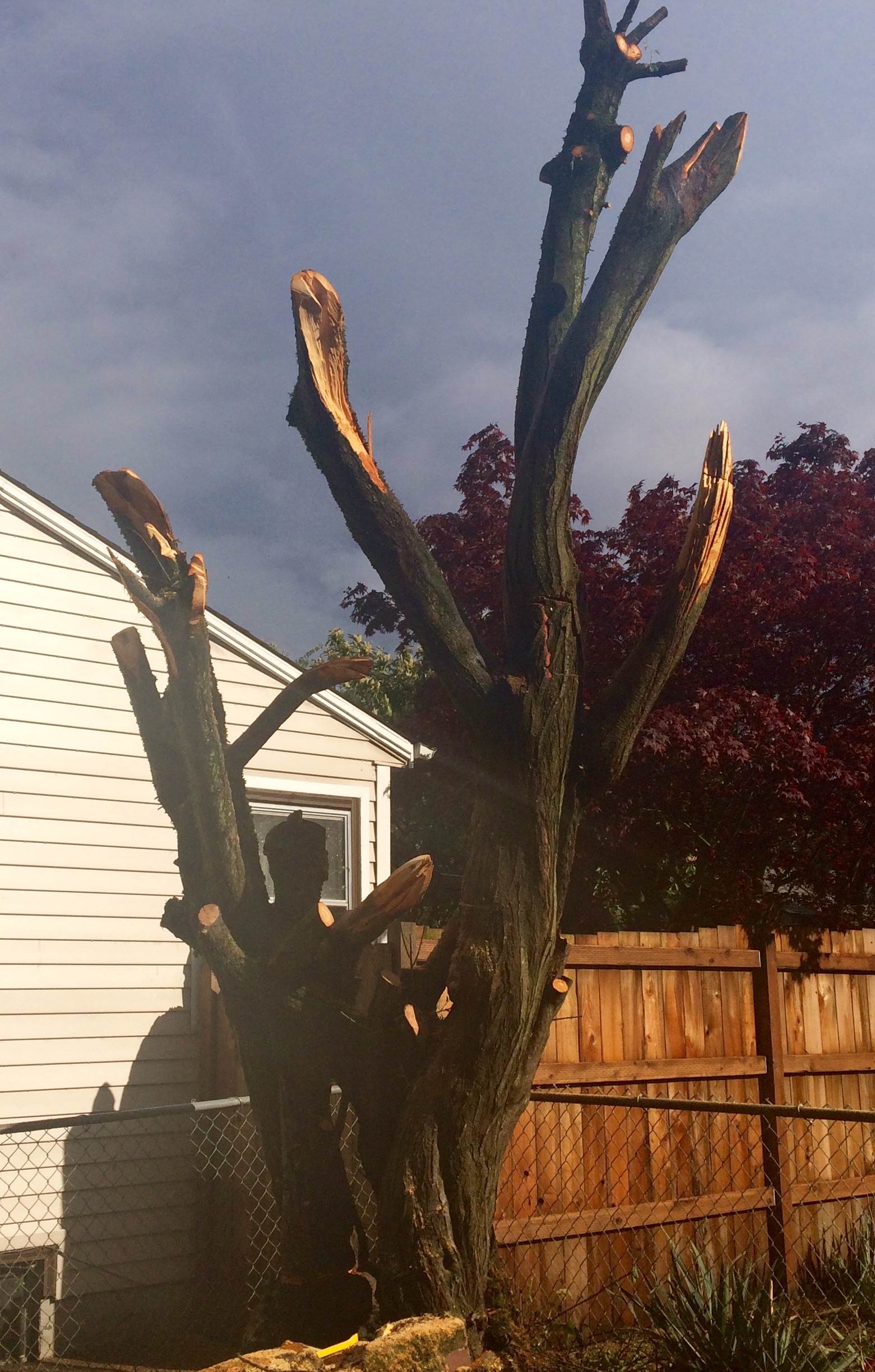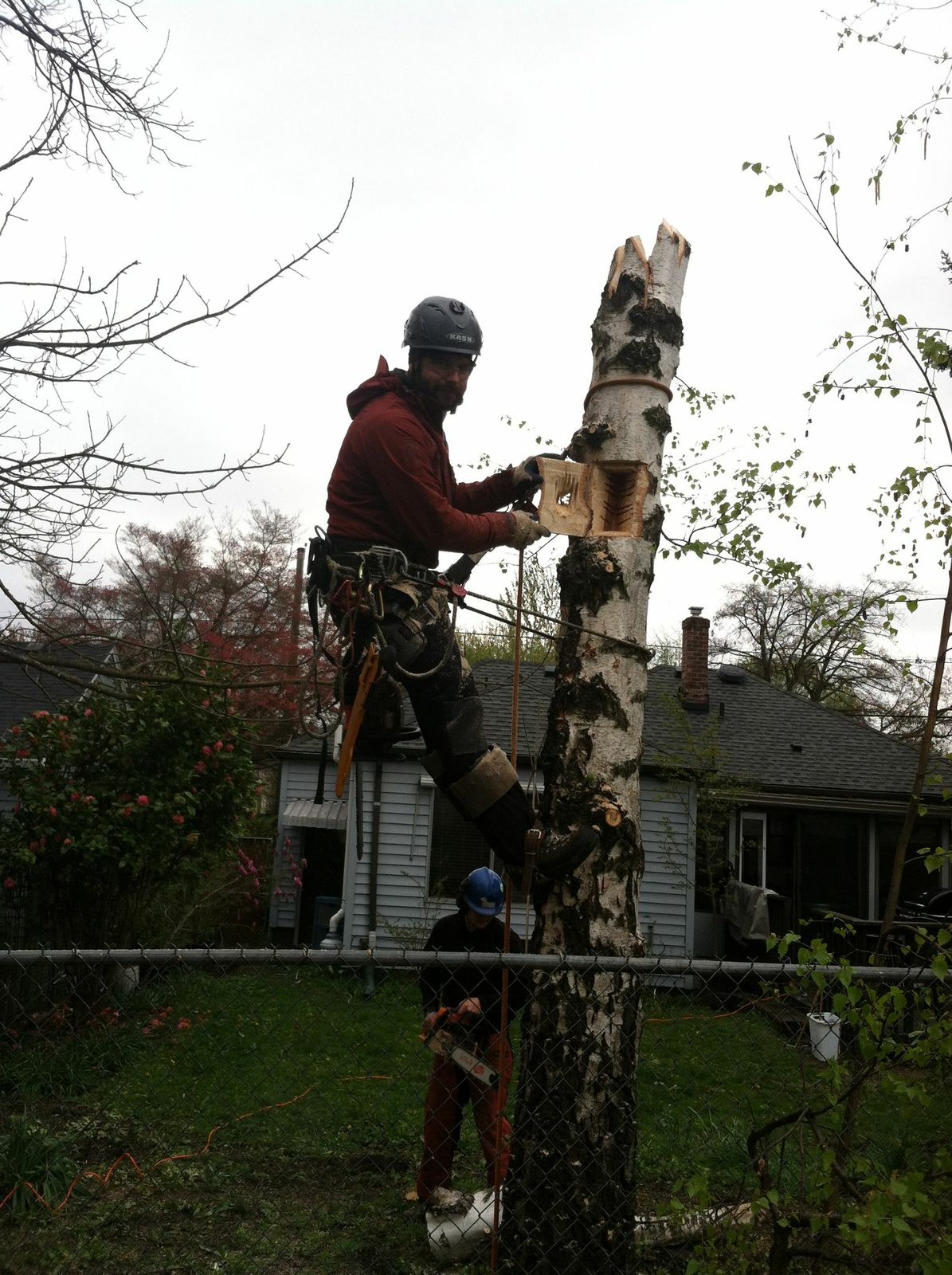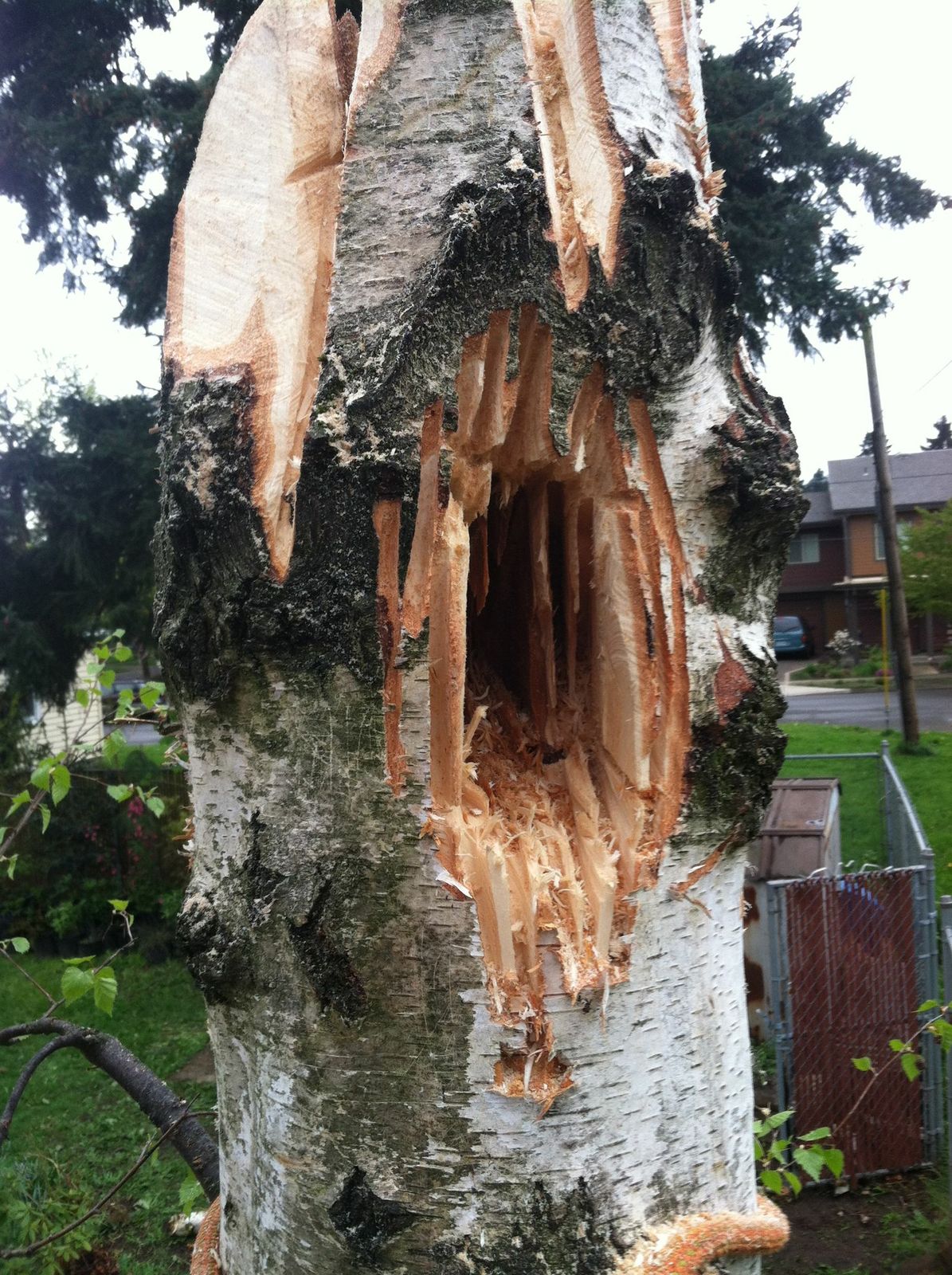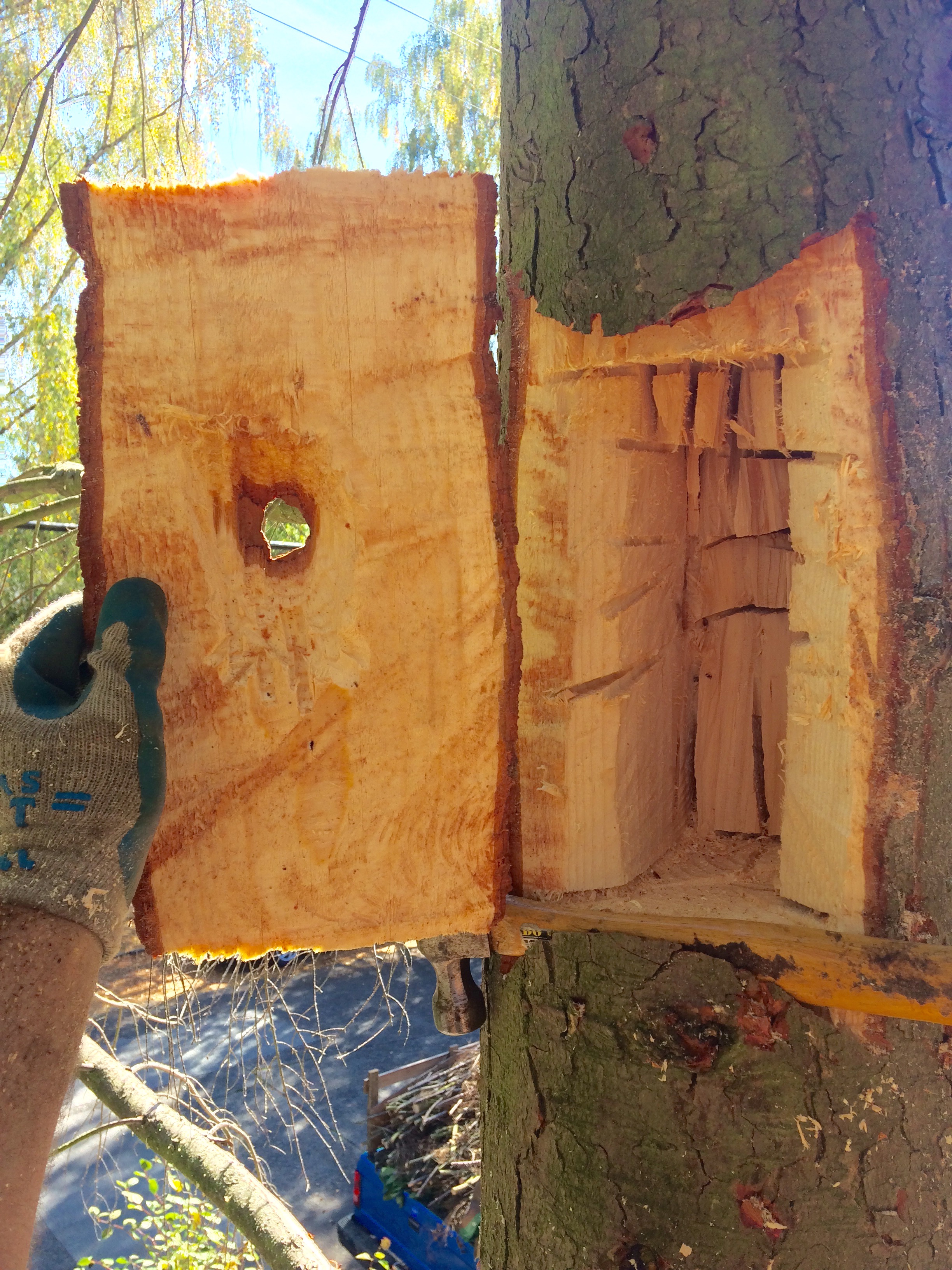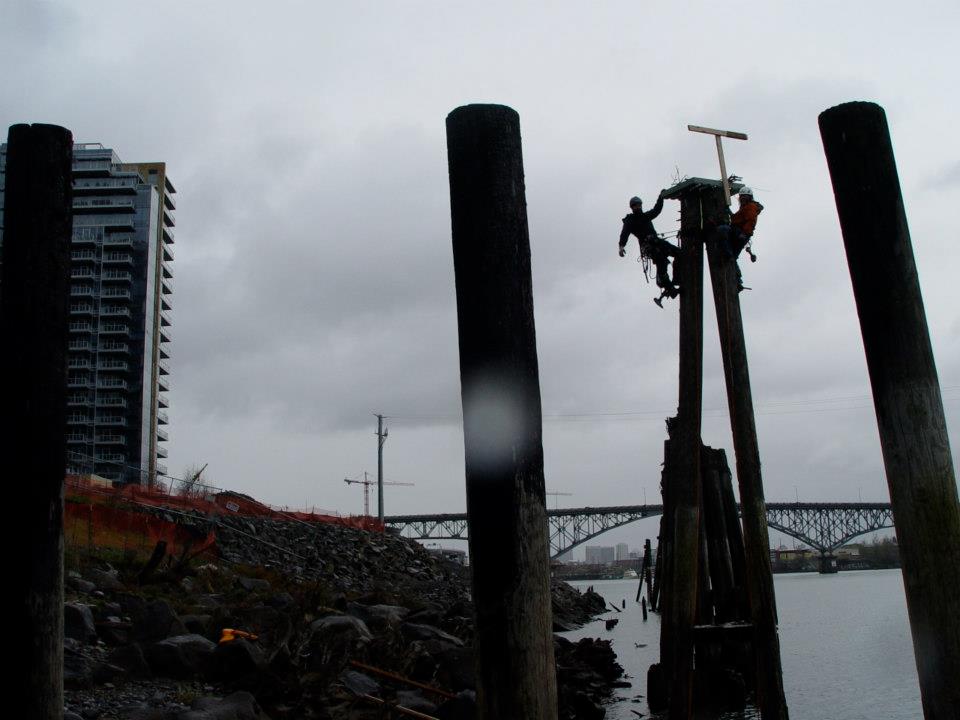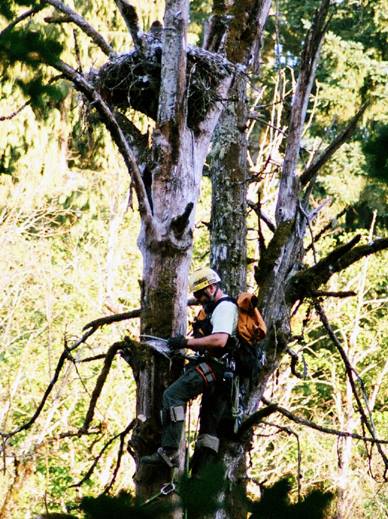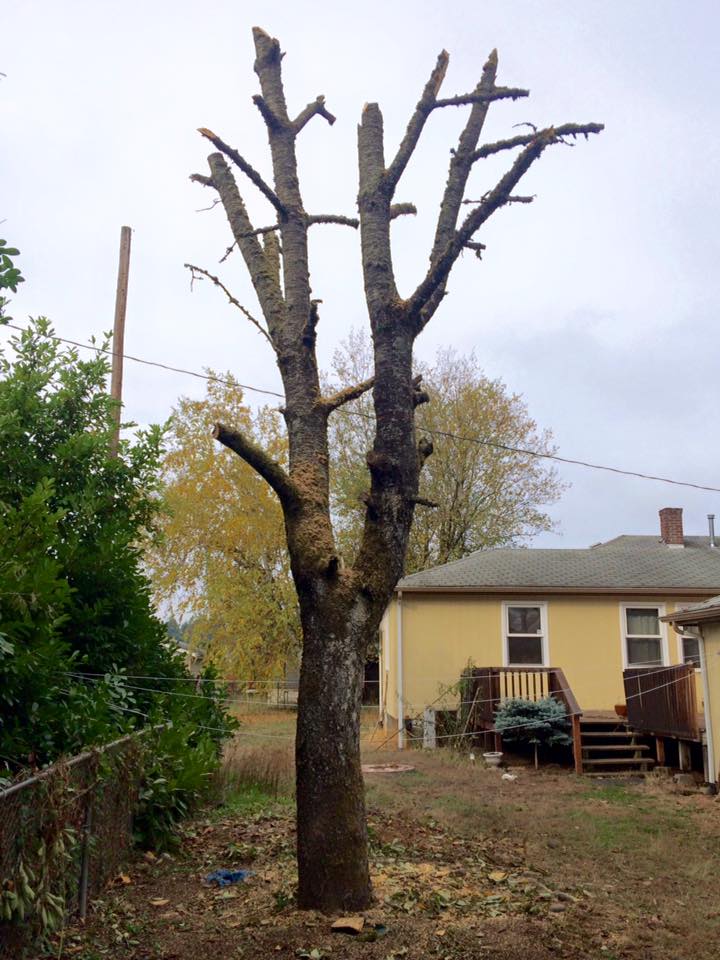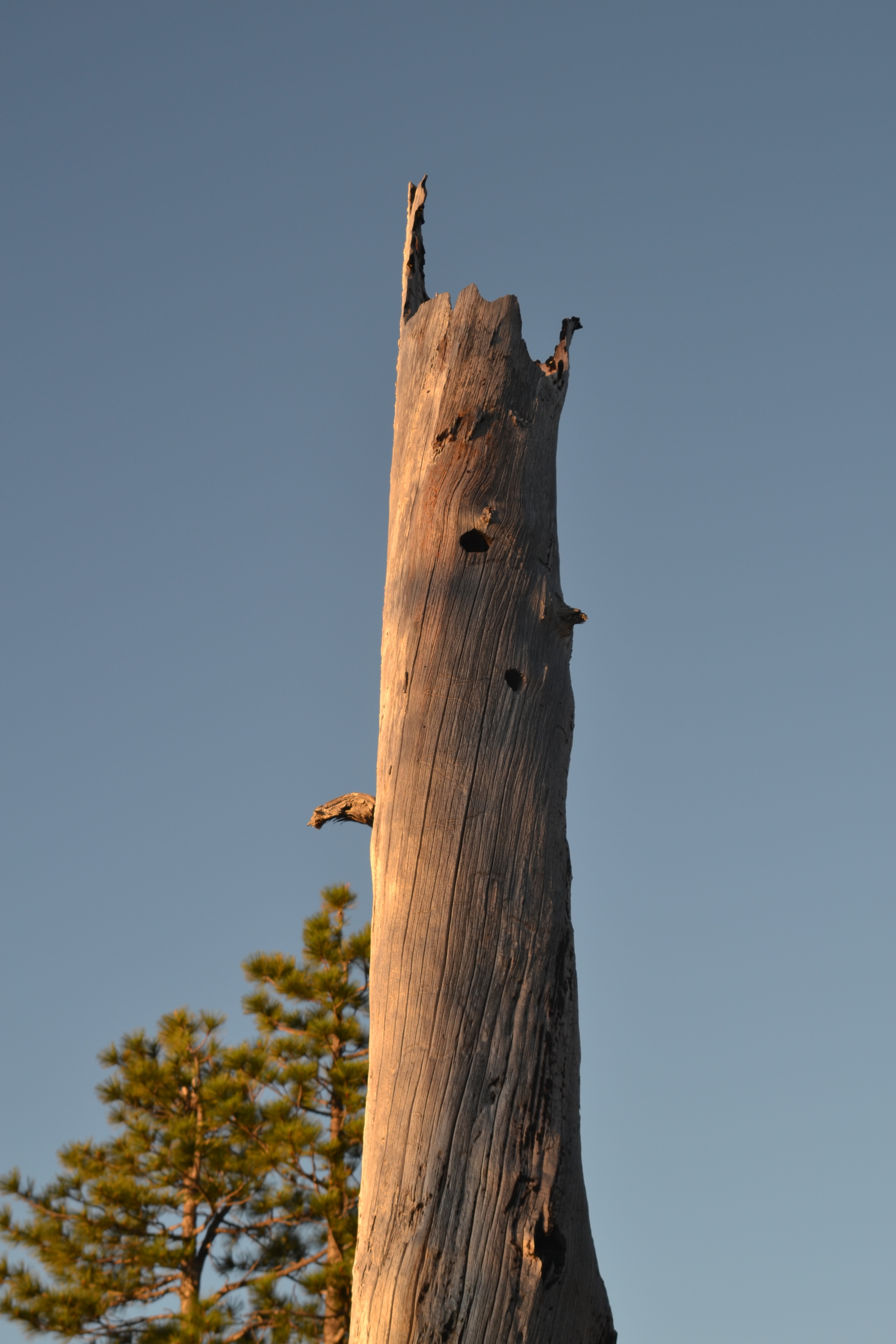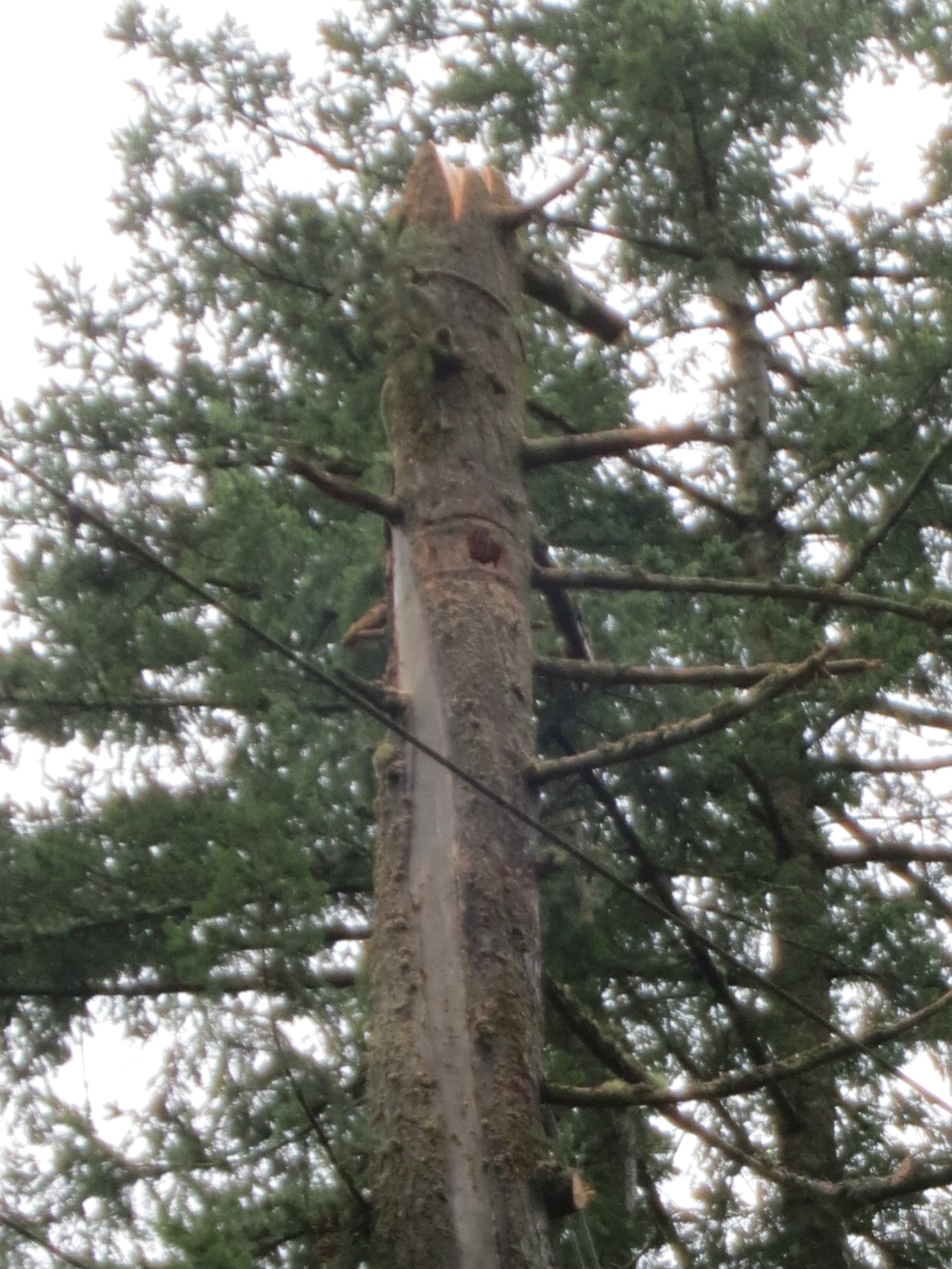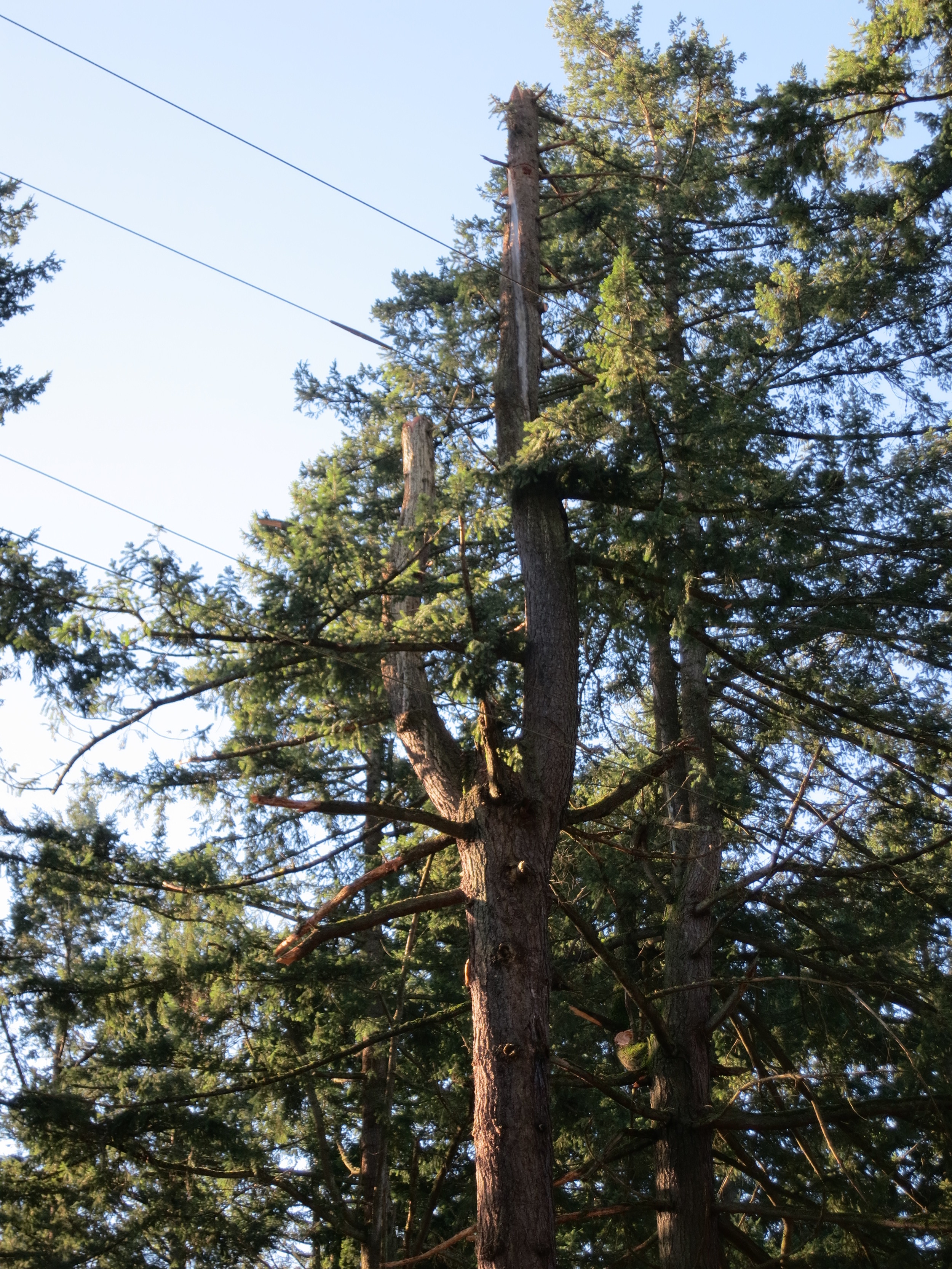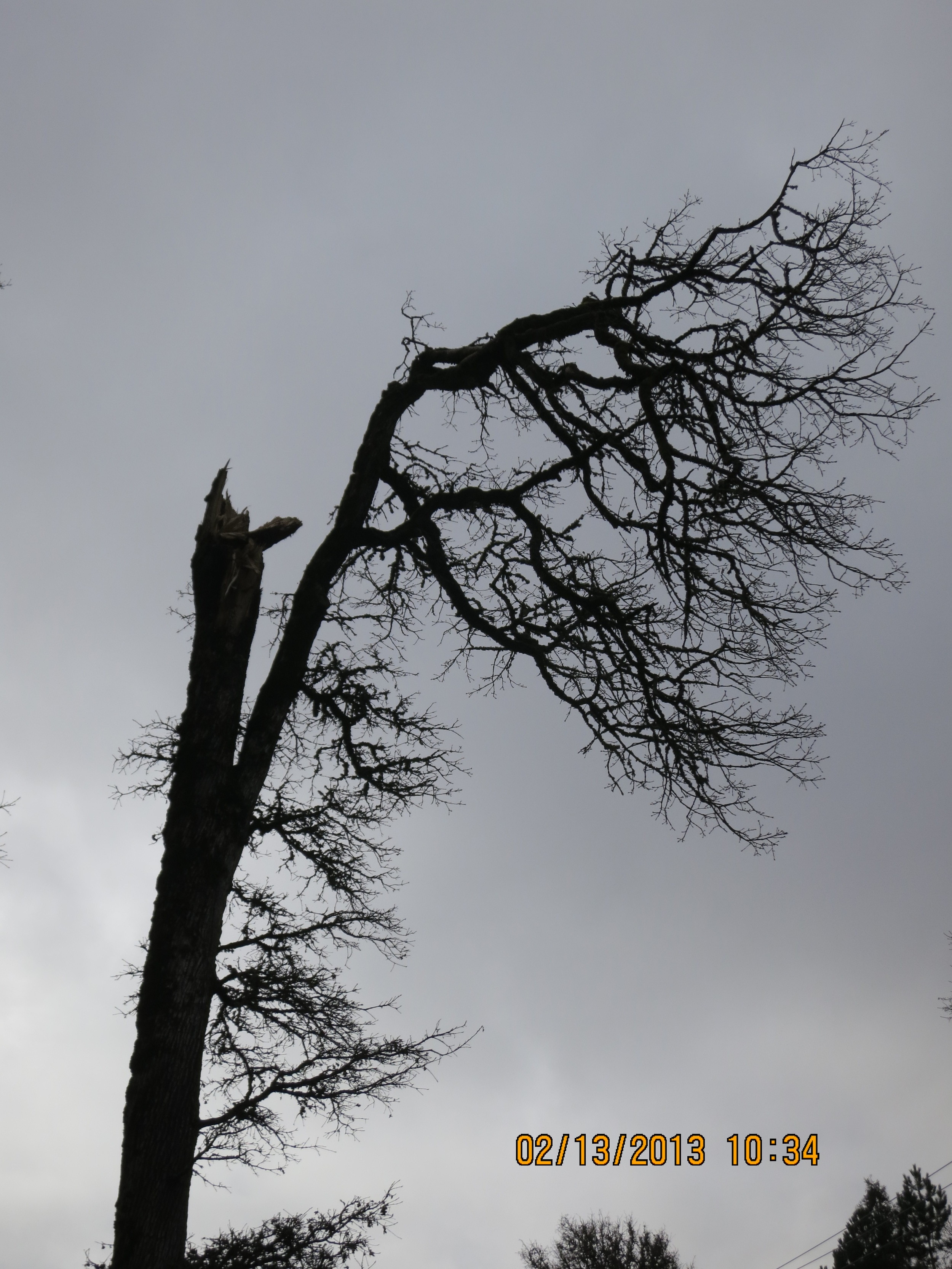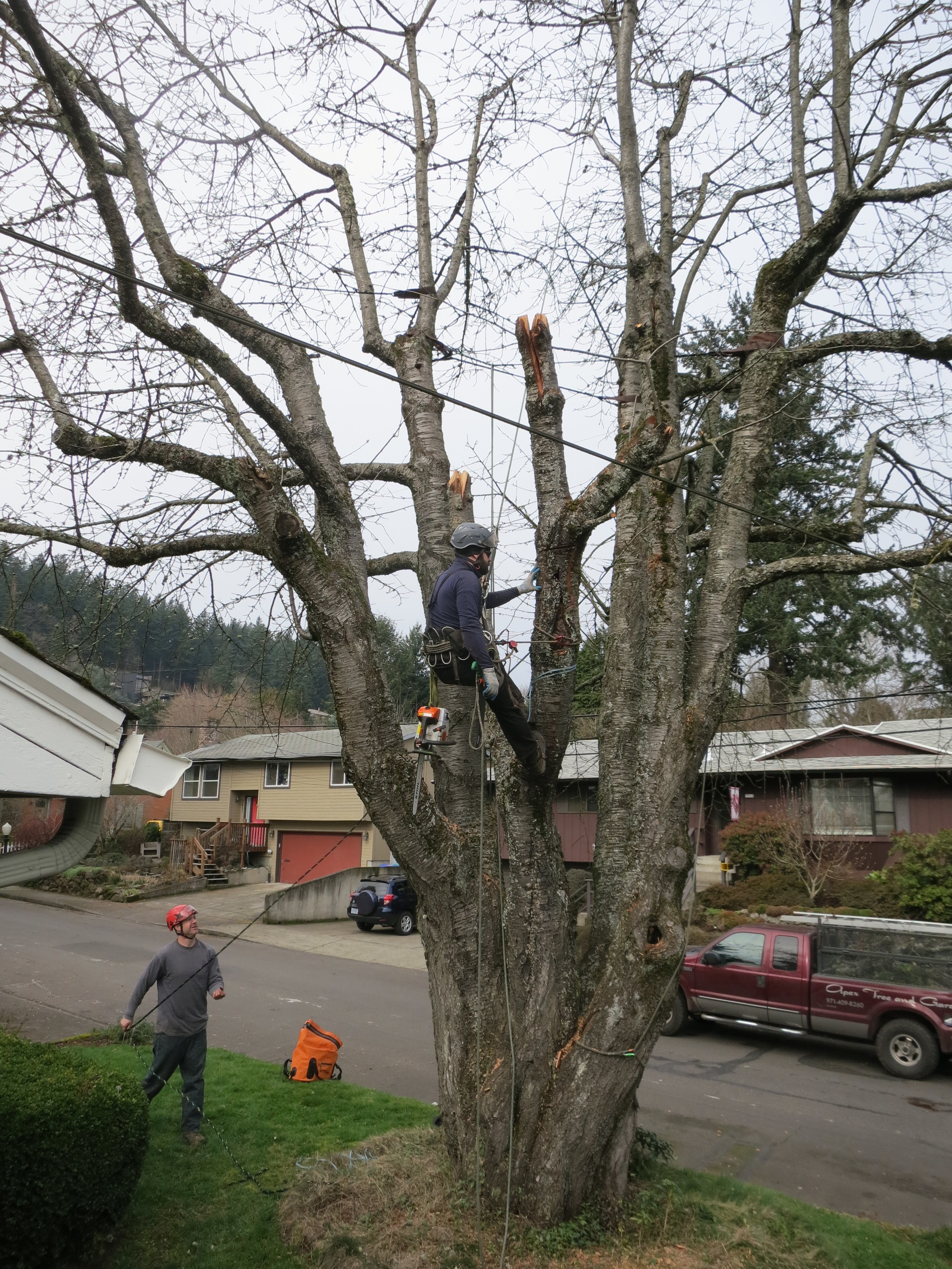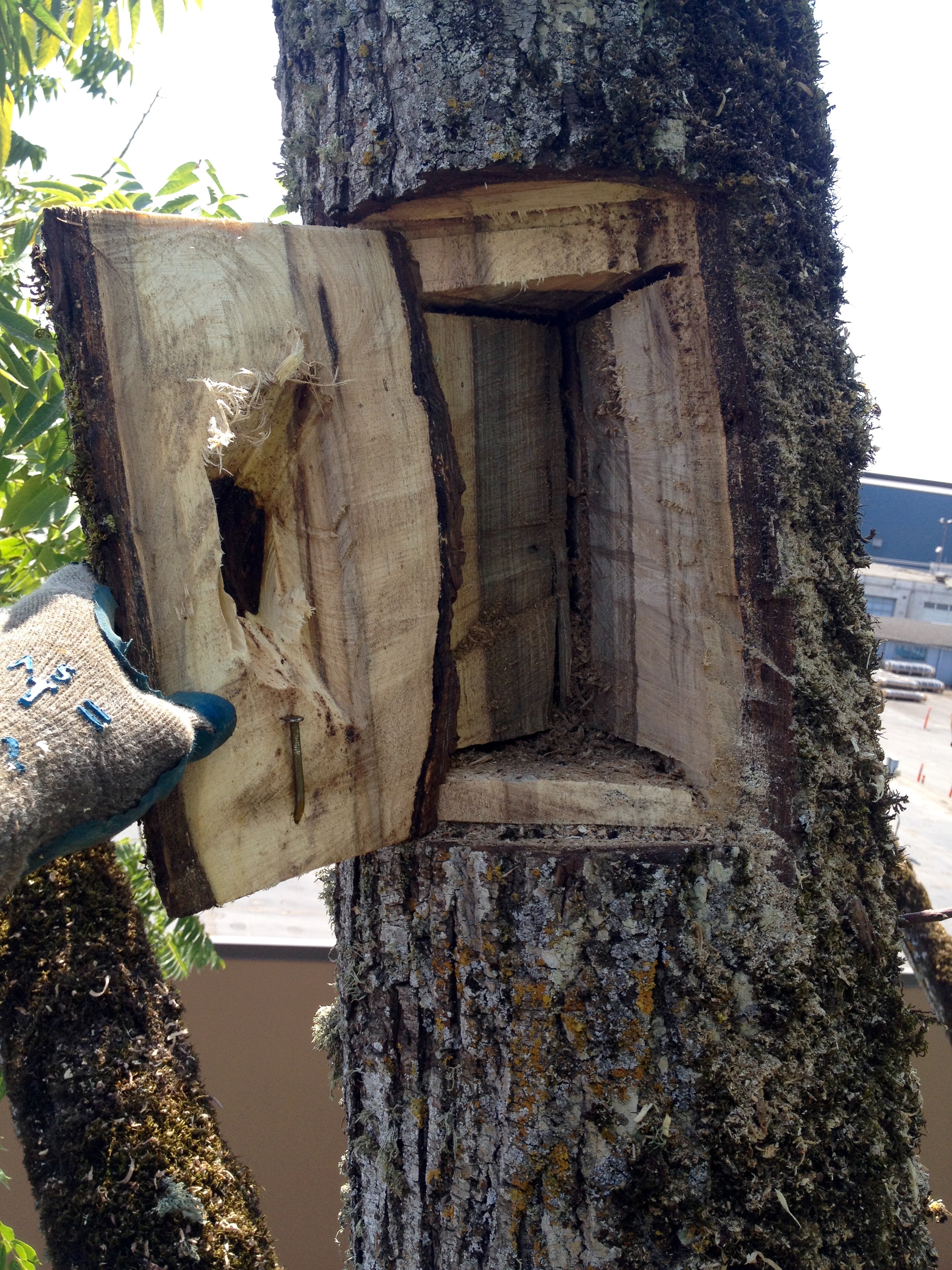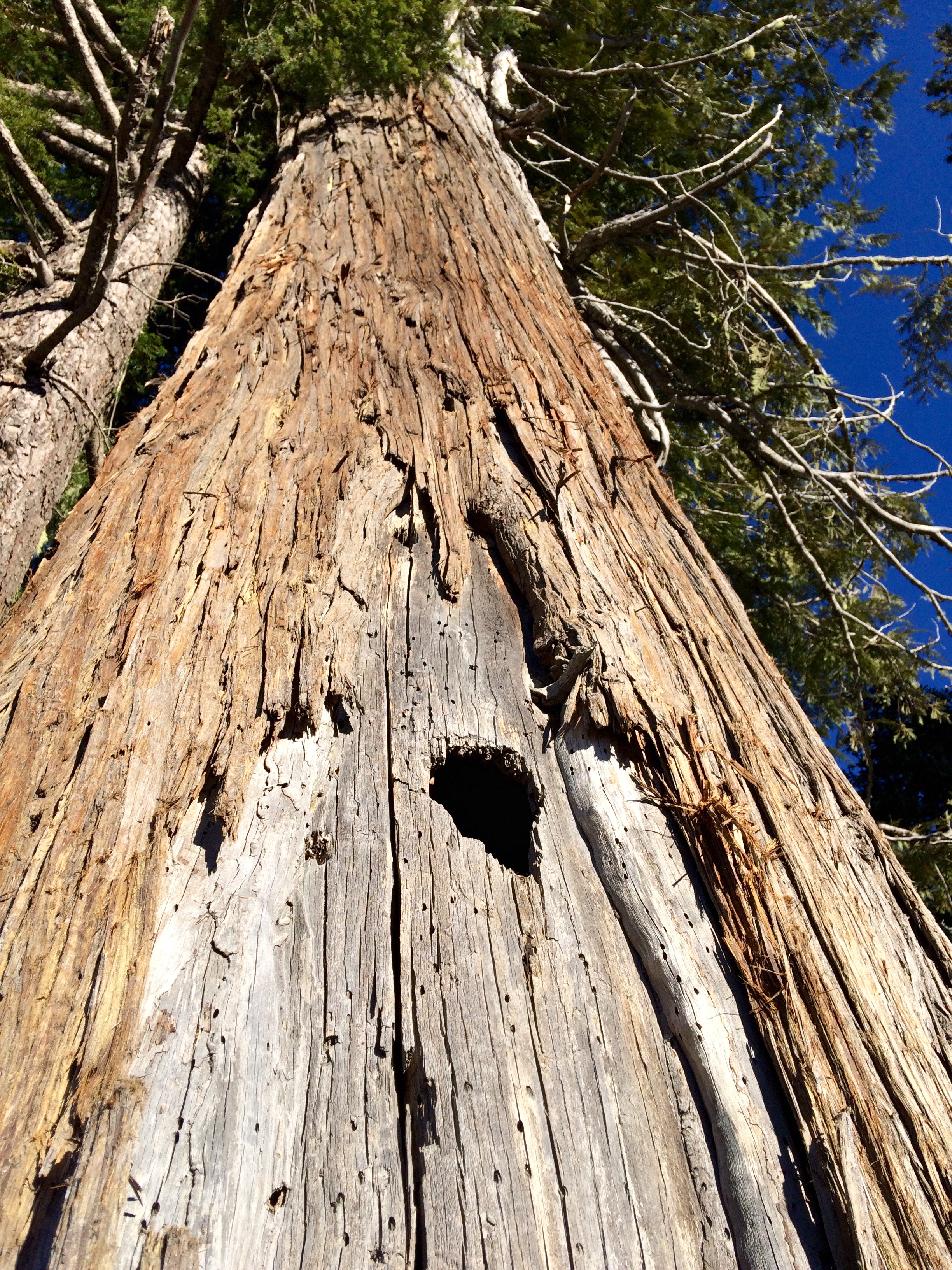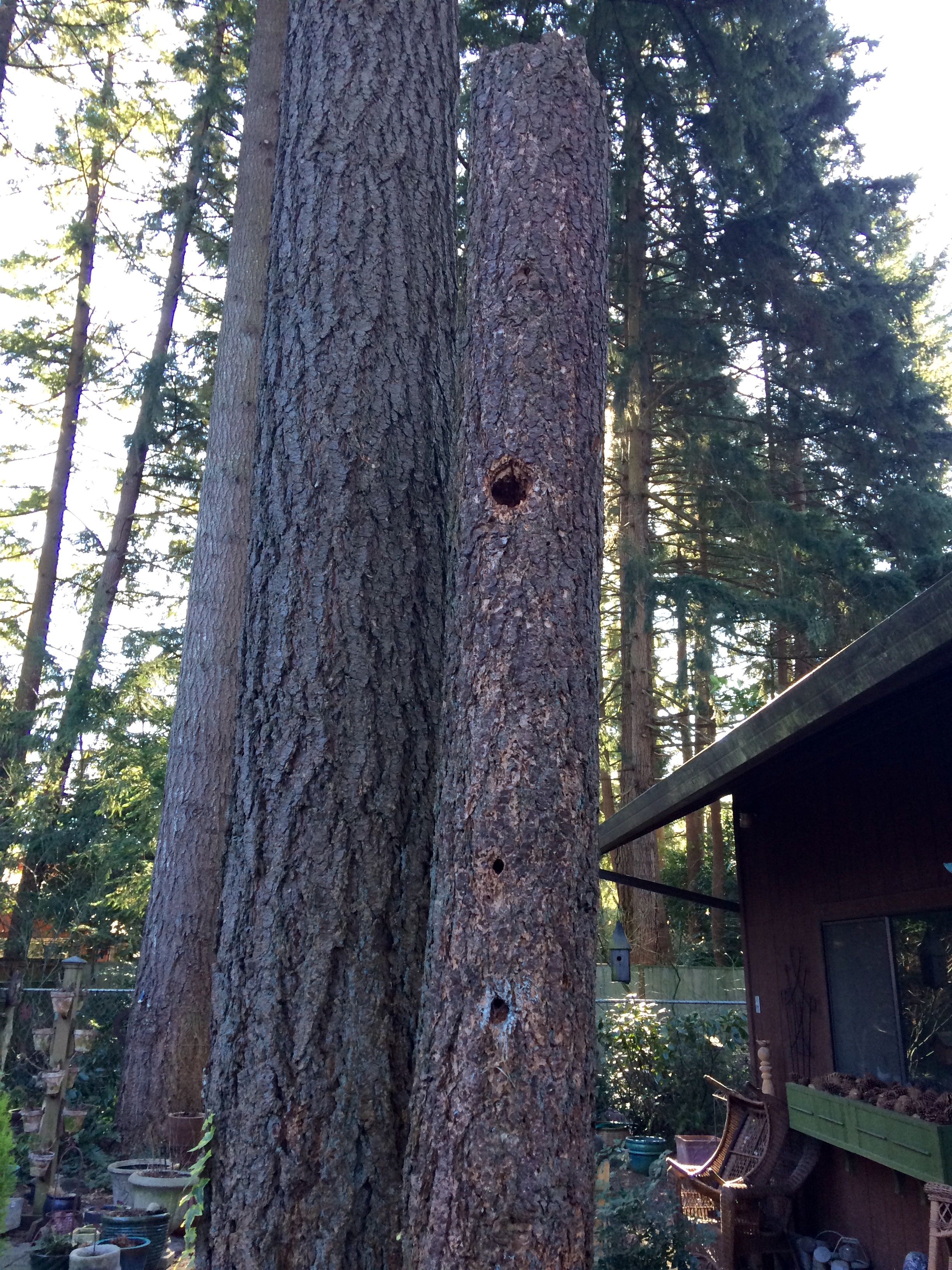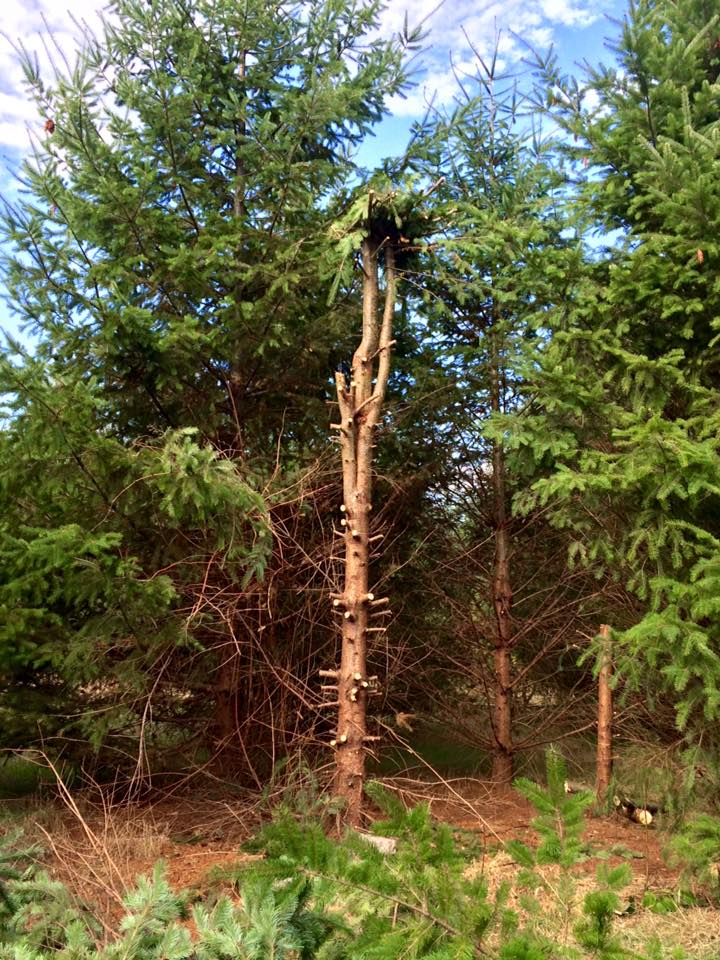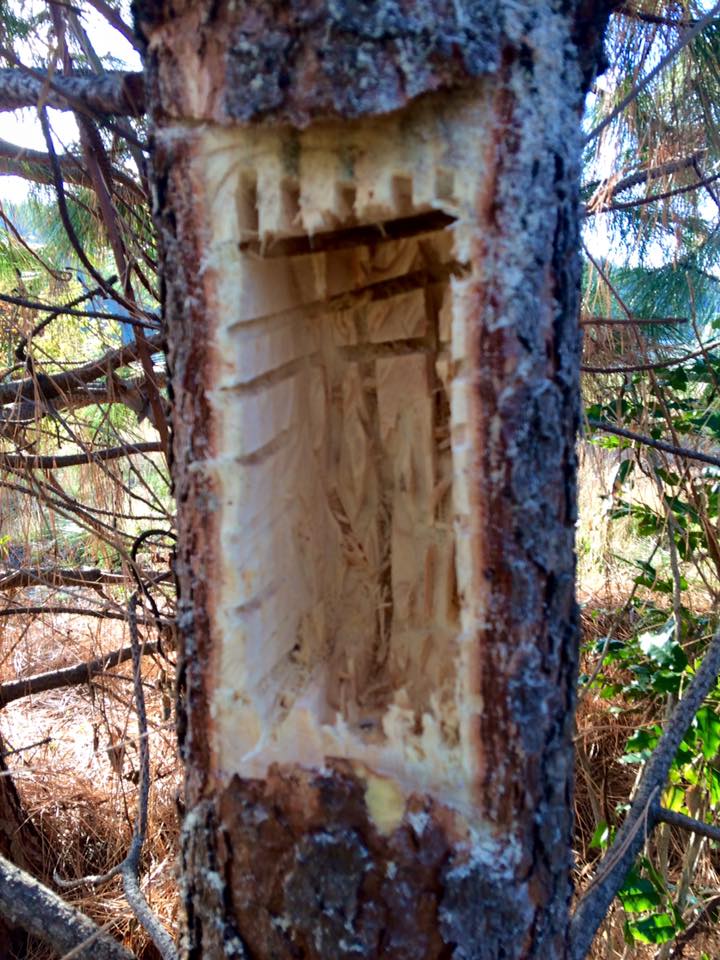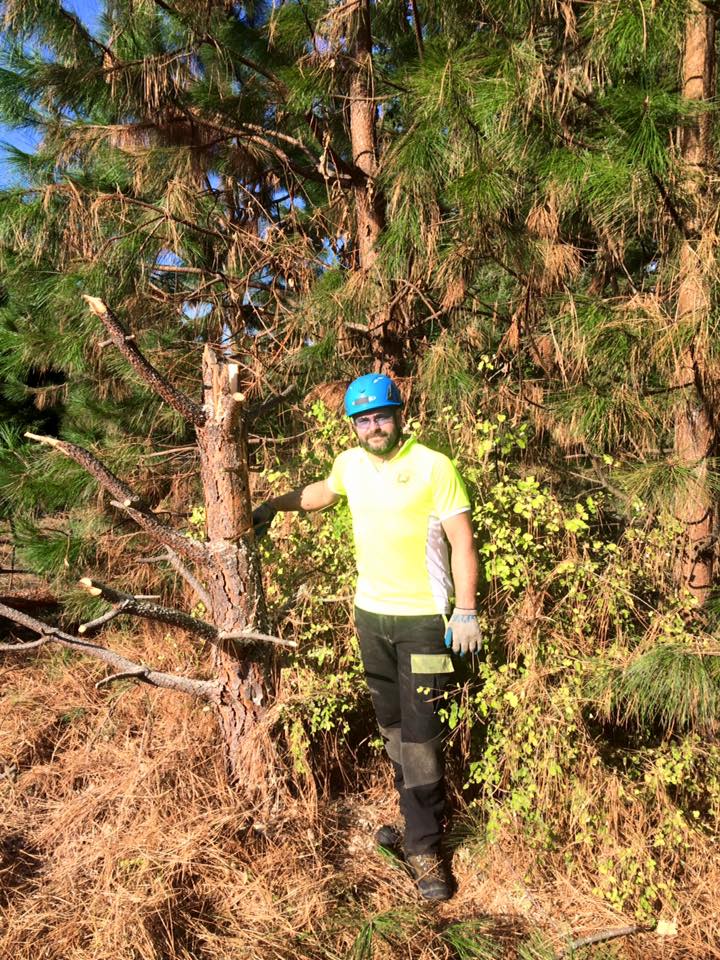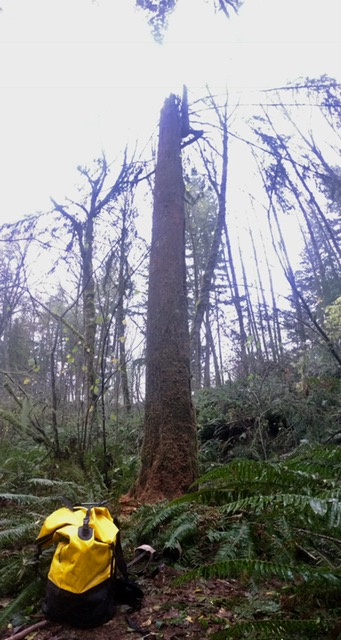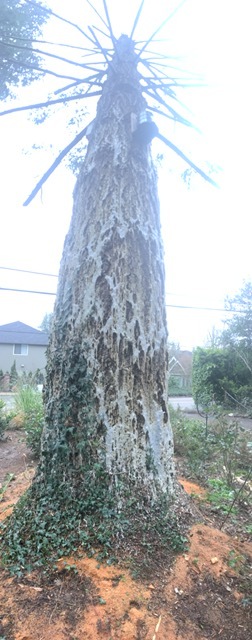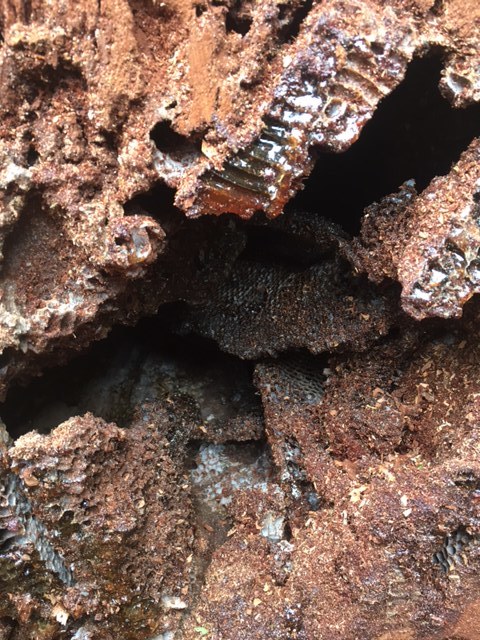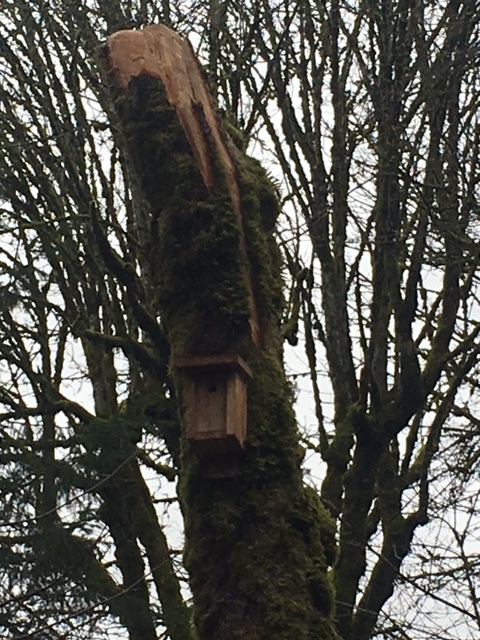


Environmental
Environmental
Wildlife Work
Arboriculture International is constantly engaged in environmental projects that require professional climbing for rigging and access. Works include wildlife surveys, restoration projects, habitat projects and seed/cone collection. Additionally, AI accompanies and assists scientists in a myriad of research projects.
"One of my ongoing missions is to match my skills and knowledge as an arborist who works and lives in the urban environment with my other half... the one who works, lives and recreates among our primitive forests. I want my focus to be on what I appreciate the most... preserving our oldest trees, enhancing our natural environment and protecting our wildlife."
Brian French
Wildlife Program
Habitat sign for ongoing urban habitat enhance projects. Aluminum printed signs with or without Arboriculture International logo available at $30. Pre-drilled signs and screws included. Click here to make an order.
Arboriculture International has started an initiative to enhance our urban forests with tree material for cavity dwellers. This means that rather than removing trees entirely to the ground, we aim to find viable structures for wildlife species to live and reproduce in.
This initiative is in response to both the history of habitat loss and the continued removal of habitat. Habitat loss is due to destruction, fragmentation and/or degradation of habitat. This is the primary threat to the survival of wildlife in North America and around the world.
There are over 130 cavity dwelling species in the Pacific Northwest and all have been effected by the removal of trees and loss of habitat.
What can we do?
Before removing a tree on a property we may consider:
What wildlife exists in or around the tree?
When is the best timing to not effect nesting season?
How many trees are around the tree to be removed?
Can parts of the tree remain as a wildlife snag?
Can parts of the tree be used for wildlife species on the ground?
Contact Arboriculture International:
For questions concerning cavity dwelling species on your property, trees or options to enhance your wildlife habitat please contact us at (503) 709-0439.
Reducing Impacts
The majority of bird species throughout the Pacific Northwest depend on trees for a place to nest. Consider laws that protect migratory bird species such as the Migratory Bird Act of 1918, which prohibits moving, possessing, collecting, harming, killing or disturbing active nests, eggs or birds of protected species. Most nesting activity occurs between the months of February and August within the Willamette Valley, this is what we call our wildlife breeding season.
Arborists impact wildlife everyday no matter the intention. Property owners are also responsible as stewards and should expect wildlife to be considered during tree pruning and removal operations. We can reduce our impacts by considering breeding season as sensitive and schedule work accordingly. If a tree must be removed with nesting activity, it is highly recommended to consult with a wildlife biologist before work begins.
Click on articles to enlarge.
Wildlife Snag Gallery
Often, trees or parts of trees that offer the most habitat are condemned as 'Defects'. Trees offer a diversity of habitat features that can only be found in and among 'Old Trees'. The illustration above shows some such features. Illustration: Brian French
Wildlife Habitat
Homeowners, city managers and arborists alike have an unique opportunity to contribute to wildlife retention in our community.
It all begins with recognizing the place in which wildlife species live, forage, hunt and reproduce. In many cases, It is all begins with preserving and restoring such places in trees.
Many species rely entirely on features that only old trees can provide. It may take a tree 100 years to become large, but another 100 years to develop adequate space for dwelling.
Other Wildlife Projects
Project requires extensive rigging and climbing. Purpose is to leave root systems anchored in soil while changing the flow of the river for salmon habitat and connecting tributaries.
Red Tree Vole is the primary prey for spotted owl. This project required climbers to access nests and confirm activity by fecal matter and other sources of evidence.
On call volunteer rescue climber for the Audubon Society of Portland. Handing injured wildlife can be dangerous work and requires training.
Offered access to Turkey Vulture sites. During the process we collected samples that were sent to labs to confirm whether California Condor were present before extinction in Oregon.



